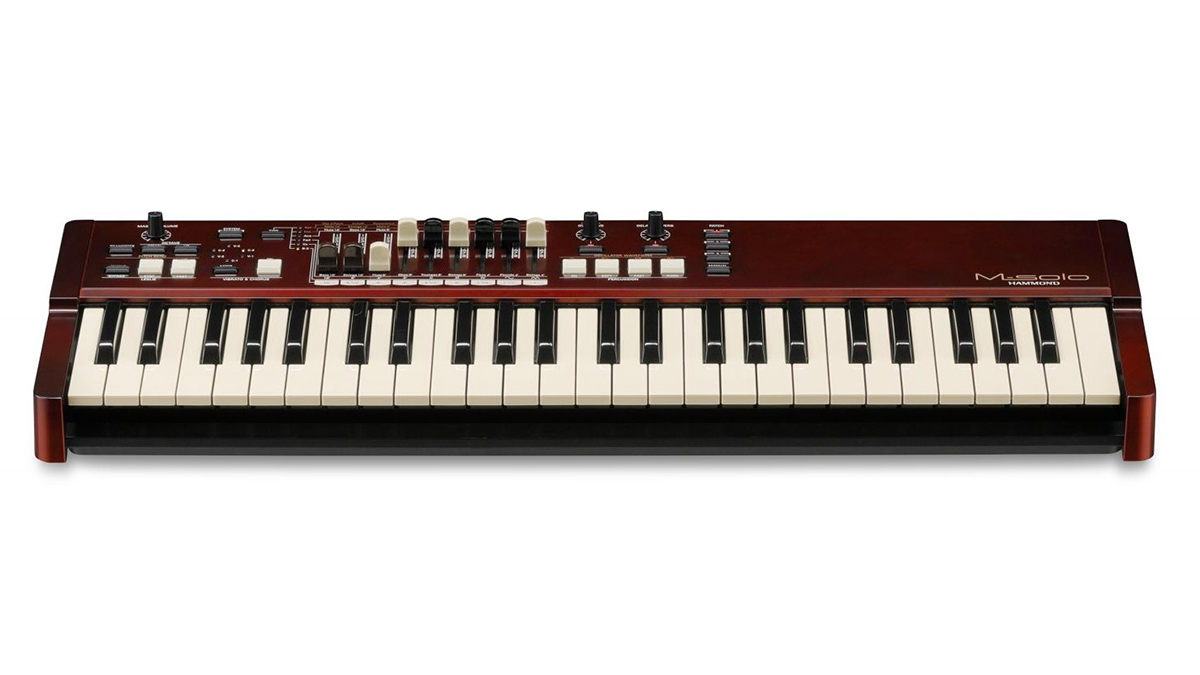“It weighs less than a Fender Strat”: The M-solo is “the lightest and most compact” portable organ that Hammond has ever produced
It also contains a drawbar-controlled analogue-style synth
Hammond organs have many qualities, but portability isn’t usually one of them. The new M-solo, though, is cut from different cloth (and significantly less of it, too).
The M-Solo is said to be in the spirit of the previous Hammond M and L series models, which were themselves designed to draw on the DNA of the classic B-3, C-3 and A-100 organs. The result is “the lightest and most compact true Hammond Organ ever produced”.
Tipping the scales at a mere eight pounds, Hammond says that the M-solo weighs “less than a Fender Strat”, which is certainly not something that could have been said about any of its previous organs. One of the compromises is a smaller, 49-note keyboard, but the MTW II drawbar engine is the same as the one found in the XK-4 organ.

Plenty of other essential Hammond features are here, too: physical drawbars, vibrato-chorus and touch-response percussion, for example. The multi-touch keybed promises a B-3-style feel, and there are transpose and octave shift controls for when you need to change key or range.
And of course, no Hammond would be complete without a Leslie speaker emulation - in this case a “high definition” digital one.
To give the M-solo a little more flexibility, Hammond has thrown in three transistor combo organ sounds as well, along with a ‘70s-style string ensemble and even a 2-oscillator analogue style polysynth. Control of these sounds comes via the drawbars.
Hammond is also releasing a soft gig bag for the M-solo; this features double shoulder straps so it can be worn like a backpack.
Want all the hottest music and gear news, reviews, deals, features and more, direct to your inbox? Sign up here.
Offered in black or burgundy, the M-solo is available now priced at $1,295/£1,189. Find out more on the Hammond website.



I’m the Deputy Editor of MusicRadar, having worked on the site since its launch in 2007. I previously spent eight years working on our sister magazine, Computer Music. I’ve been playing the piano, gigging in bands and failing to finish tracks at home for more than 30 years, 24 of which I’ve also spent writing about music and the ever-changing technology used to make it.
